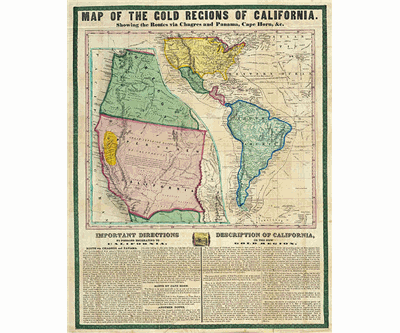
Smithsonian.com takes an in depth look at what it terms a second California gold rush.
The first wave occurred in the mid-1800s – hence the term 49er – and the roughly 100,000 prospectors and panners that descended on the region played a huge part in the creation of the state of California.
Today’s miners – according to the article their numbers have doubled over the last four years – have been lured to the state by persistently high unemployment in the US and gold prices of $1,500+ per ounce.
They leave lives as “movie lighting techs and Caribbean sport boat captains and penny-stock investors and soldiers” behind to “hunt for color against gray river rocks”:
Nugget Alley is a fabled fork in the San Gabriel River just an hour outside Los Angeles […] Scores of hard-core prospectors work the San Gabriel, and perhaps 50,000 people throughout the state prowl a few weekends a year with pans and metal detectors and dowsing rods.
Occasionally, a five-ounce nugget comes to light, and a highly skilled and tenacious prospector might pull $1,000 out of the ground on a day fortune is with him. But most find just flecks, barely enough to keep them in groceries, for all their exertions. River miners crush fingers, toes and even teeth shoving aside huge boulders to reach the gleam beneath. “I’ve been buried under the water three times,” says Bernie McGrath, a prospector and former pipeline worker. “It’s a treacherous way to make money.” It’s also, in Nugget Alley (part of the Angeles National Forest), unauthorized.
Continue reading “There’s a New Breed of Forty-Niners Rushing to the Pacific” at Smithsonian.com